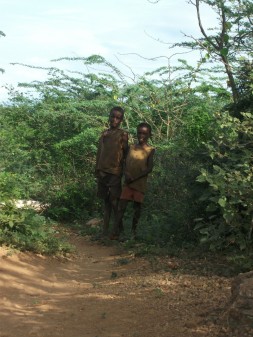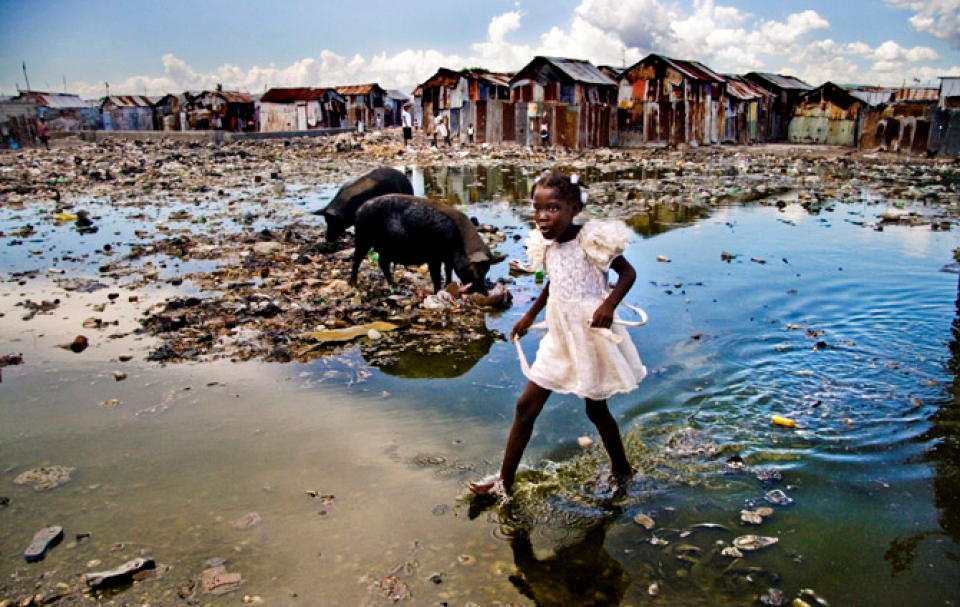Yesterday, I went to visit a model community here in Lagonave.
A model Community is a program set up by Limye Lavi, the Haitian Partner of Beyond Borders. They work in the most deprived, poorest of poor areas in Haiti to prevent child slavery. The program works in a whole community, working with all of the parents in this community. The model communities are extremely isolated. It took us an hour and a half by moto on the common, very rocky, unstable roads in Lagonave. We then had to walk an hour from the dirt road onto a windy small path. One of the parents in the community walked with us to show us where to go on the small path. He was showing us where his parents lived, his cousin, etc – but where he pointed, I could barely see a any type of house, as it was so far away.
Out there, your neighbor was atleast a half an hour walk, the only source of water was atleast an hour, to a three hour walk,
to get to school? Well there was no school.
To get to the doctor if you are sick? Maybe two days. You would have to go to the only hospital on the island (of 150,000 people). Imagine if you were sick and had malaria and couldnt walk (and you had no shoes), you were so sick, that you had to go to the doctor.
(Malaria is so common here, I know of four people who have it here, and I have only been here for three days)
Plan on atleast a two day journey to get there, and plan to spend about 90.00$ total, which includes the transport to get there, the doctor visit, and the transport back. You would have to stay the night there because it is too far from your house. You would also have to eat during this journey. But the catch is that, you only make about 7.00$ a month as a farmer.
The model community program works on places like these where there are no jobs, no schools, no doctors, not even water ; where it is of the utmost struggle to survive. To just simply live. These are the places where families have 15 children because there is nothing else to do, and there is no education. And this is why child slaves are so rampant here.
Normally, the parents who send their children off as ‘restavec’s (translated as stay with) don’t know how they will be treated at their new home. They are told that their children will get an education and food everyday. The model community program works with these families who are at risk of sending their children off as slaves unbeknowst to them, or who have already sent their children off. There are people who are trained within the community to teach the parents about who restavecs are and how they are treated. They use books to show them, plays and demonstrations.
 When I spoke to one of the trainers, she said that as she was reading the book out loud to these parents, some of them started to cry, and some of them were really taken a back. It hit their conscious. The pictures in the books showed the reality of the life of a ‘restavec’, of the children being beaten to the ground day after day, doing all of the house chores including carrying heavy water buckets hours at a time. The program works best as educating the communities about the realities of the restavecs, and after the parents have been through the program, they either go and get their children who were sent off as restavecs, or make sure to visit them as often as they can to make sure they are doing okay. They also plan their lives better around the idea of preventing their children from being sent off.
When I spoke to one of the trainers, she said that as she was reading the book out loud to these parents, some of them started to cry, and some of them were really taken a back. It hit their conscious. The pictures in the books showed the reality of the life of a ‘restavec’, of the children being beaten to the ground day after day, doing all of the house chores including carrying heavy water buckets hours at a time. The program works best as educating the communities about the realities of the restavecs, and after the parents have been through the program, they either go and get their children who were sent off as restavecs, or make sure to visit them as often as they can to make sure they are doing okay. They also plan their lives better around the idea of preventing their children from being sent off.
I imagined if I were placed in this community and had to live here for the rest of my life. What kind of life would I have? I don’t know how I would tolerate, let alone survive this kind of struggle.
